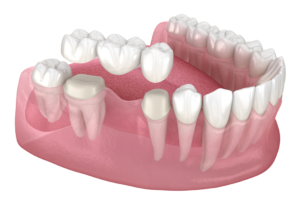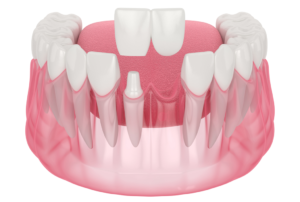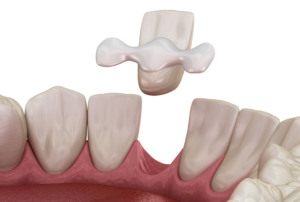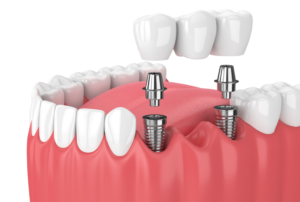Receding gums are a condition where the gums wear away or pull back from the tooth surface, exposing the surfaces of the teeth’s roots. It makes them more prone to decay and causes sensitivity to hot and cold temperatures. In several cases, it can lead to different types of gum (periodontal) diseases and tooth loss. Depending on how much tissue has been worn out, there are various therapies. The earlier the diagnosis and treatment, the better the outcome.
Gum recession is a common dental condition. However, due to the progressive nature of gum recession, most people don’t realize they have it. According to the California Dental Association (CDA), periodontal disease is a major factor in many occurrences of receding gums. It affects three out of every four adults; most of the time, it is painless and goes unnoticed. Tooth sensitivity is frequently the initial symptom of gum recession; however, you can also notice that a tooth appears longer than usual. Usually, a notch is felt close to the gum line.
Causes
It is imperative to know what can cause gum recession. Avoid doing the following in order to maintain a health gum;
- Poor oral hygiene.
- Tobacco use.
- Genetics.
- Periodontal disease (Gum disease).
- Certain medical conditions.
- Side effects of certain medications.
- Aggressive brushing for a prolonged time.
- Hardened plaque buildup (tartar).
- Smoking.
- Female hormonal changes.
- Diabetes.
- Grinding and clenching teeth.
Symptoms
Though knowing the causes helps prevent it, there might be times when the gum recession would have already started. So, it is equally essential to be aware of its symptoms to ensure you visit the dentist before it’s too late. A few of the most common signs of gum recession are;
- Appearance of longer teeth.
- Sensitivity to hot and cold temperatures.
- Bleeding after brushing or flossing.
- Gum inflammation.
- Bad breath.
- Loose teeth.
Treatments
If you suspect you may have gum recession, it is important to visit a dental expert for an evaluation. They will be able to determine the extent of the recession and recommend a treatment plan. In mild cases, improved oral hygiene and a deeper cleaning by a dental hygienist may be enough to halt the recession and promote gum tissue growth. More severe cases may require surgical intervention, such as composite restoration, removable gum veneers, and gum grafting to repair the gum tissue and protect the roots of the teeth.
Preventing gum recession is important for maintaining the health of your teeth and gums. This includes practicing good oral hygiene, brushing and flossing regularly, and visiting the dentist for regular cleanings. In addition, quitting tobacco use and being mindful of teeth grinding can also help prevent gum recession.
Gum recession is a problem that you shouldn’t overlook. Contact Bravo! Dental to schedule an appointment with our experts if you believe your gums are receding. We will analyze and give you the ideal treatment that can restore the gum’s health and halt any additional harm.














